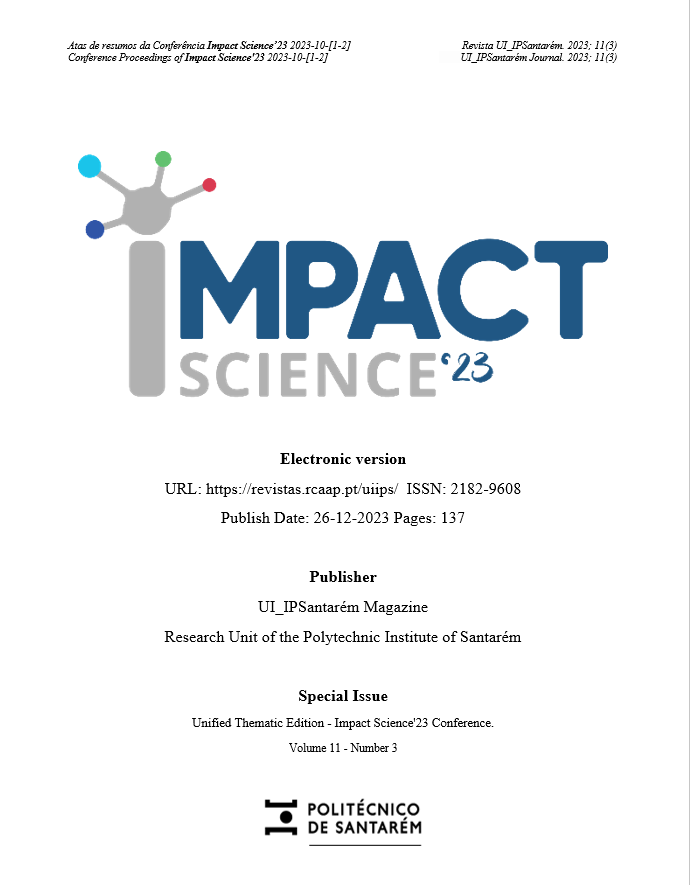Analysis of Gait Motor Coordination in Patients with Knee Arthroplasty: Case Study
DOI:
https://doi.org/10.25746/ruiips.v11.i3.32494Keywords:
Total Knee Arthroplasty, Knee, Eldery, Motor Coordination, Physical ExerciseAbstract
The evaluation of gait is a crucial factor in measuring postoperative outcomes of Total Knee Arthroplasty (TKA). Total Knee Arthroplasty is a surgical option for patients in advanced stages of joint degeneration in the knee. This surgery involves the complete replacement of the joint with a prosthesis, restoring movement and the patient's quality of life. Currently, Total Knee Arthroplasty has become an established clinical standard procedure. In Portugal, between 2021 and 2023, there were 3,494 Total Knee Arthroplasties. Reduction of pain, improvement in biomechanical function, and increased quality of life are predominant characteristics when performing TKA. Motor coordination involves managing redundant degrees of freedom in a biokinematic chain to produce controlled movement. Coordination strategies include modulation of degrees of freedom at each joint in biokinematics, altering movement variability, and stability in motor actions. To date, no previous studies have analyzed the gait of individuals with Total Knee Arthroplasty. The aim of this study was to assess motor coordination asymmetries in the gait of an elderly individual with Total Knee Arthroplasty. The 68-year-old male participant underwent TKA surgery 10 months ago and underwent a single gait session where gyroscope data was captured using the Phyphox application. Data processing was performed in Microsoft Excel, where radians were first converted to degrees. Movement planes were then defined based on time and obtained degrees, and phase diagrams were created for the three movement planes. Through analysis of line fluidity and dispersion, results showed that among the various planes, the sagittal plane exhibited the best motor coordination. The sagittal plane, involving leg flexion and extension, demonstrated the best motor coordination. In the frontal plane, lower motor coordination of the non-TKA leg was observed. Additionally, there was less external rotation of the left foot, indicating potential decreased stability of the hip joint. Based on the results and to mitigate identified asymmetries, it is recommended that the participant engages in muscle strengthening and proprioception exercises to improve motor coordination during gait and prevent conflicts between agonist and antagonist muscles. There has been a growing number of studies utilizing gait analysis in TKA patients. This case study demonstrates that motor coordination analysis in gait can be conducted individually using a mobile application. This methodology allows for more cost-effective data collection, enabling the analysis and discussion of individual results, which can be used in exercise prescription.
Downloads
Published
How to Cite
Issue
Section
License
Copyright (c) 2023 Bárbara Tavares, Inês Leal, Cristiana Mercê, Marco Branco

This work is licensed under a Creative Commons Attribution-NonCommercial-NoDerivatives 4.0 International License.
Authors publishing in this journal agree to the following terms:
Authors retain copyright and grant the journal the right of first publication, with the article simultaneously licensed under the Creative Commons Attribution License that allows sharing of the work with acknowledgement of authorship and initial publication in this journal.
Authors are permitted to enter into additional contracts separately for non-exclusive distribution of the version of the article published in this journal (e.g., publish in an institutional repository or as a book chapter), with acknowledgment of authorship and initial publication in this journal.
Authors have permission and are encouraged to publish and distribute their work online (e.g., in institutional repositories or on their personal webpage) at any point before or during the editorial process, as this may generate productive changes, as well as increase the impact and citation of the published work.



